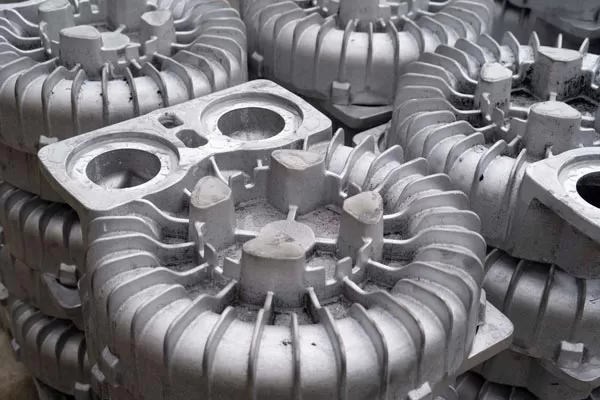How to Prevent Defects in Aluminum Sand Casting for Automotive Parts
Preventing Defects in Aluminum Sand Casting
Aluminum sand casting plays a vital role in the automotive industry, allowing for the production of complex parts with precision and cost-effectiveness. As automotive makers continue to demand high-quality components, ensuring these parts are defect-free is paramount. Defective parts can lead to a host of issues, from mechanical failures to increased costs due to waste and rework. Understanding how to prevent these defects is essential for anyone involved in the casting process.
In automotive manufacturing, defects disrupt the assembly line and can also pose safety risks. By implementing effective strategies to prevent defects in aluminum sand casting, manufacturers can enhance the reliability and lifespan of automotive components. This knowledge is crucial in maintaining production schedules and meeting regulatory standards—key elements that any automotive supplier needs to consider. Let’s explore the common causes of defects and how to tackle them effectively.
Common Causes of Defects in Aluminum Sand Casting
In the pursuit of defect-free aluminum castings, it’s crucial to identify the root causes that often lead to issues. Understanding these common culprits can guide in implementing preventive measures effectively.
1. Mold Design and Preparation: The design and preparation of molds are foundational to successful casting. Poor designs or improper preparation can lead to structural flaws. A well-designed mold ensures even distribution and proper solidification of the metal. Neglecting these factors can result in voids and irregular surfaces.
2. Metal Temperature Inconsistencies: Controlling the temperature of the molten metal is another challenge. If the metal is too hot or cool, it can affect its flow and fill properties, leading to stress within the casting or creating a less than desired surface finish.
3. Contaminants and Impurities: Unwanted impurities in the metal or the sand can weaken the casting structure. These contaminants often sneak in during the melting process or through unclean equipment, resulting in less durable parts.
Addressing these causes involves a series of targeted strategies that will be discussed further. By understanding these issues, one can plan more effectively to ensure high-quality outcomes.
Techniques for Improving Mold Design and Preparation
Taking the time to perfect mold design and preparation can set the stage for high-quality casting. A precise pattern is essential, serving as the blueprint for the mold. It determines the final shape and integrity of the casting, so accuracy here is non-negotiable. Making sure the pattern is flawless helps avoid common defects that can appear in the casting’s surface or structure.
Ensuring proper mold filling and venting is equally important. Efficient filling lets the molten aluminum flow adequately into the mold, filling every nook and cranny without leaving voids. Venting, on the other hand, releases any trapped gases that could create imperfections. This balance leads to a clean, smooth finish. Selecting high-quality sand and binders in the mold process rounds out these steps by providing durability and consistency, paving the way for strong components.
Controlling Metal Temperature to Avoid Defects
Maintaining consistent metal temperature is a crucial aspect of preventing defects in aluminum casting. When the temperature is just right, the aluminum flows better, fills the mold thoroughly, and solidifies uniformly, avoiding stress points. It may sound simple, but fluctuations in temperature can easily lead to warping or structural weaknesses.
To keep the temperature in check, using appropriate tools and equipment is a good approach. Thermocouples can measure temperatures accurately, ensuring the aluminum stays within the target range. Additionally, understanding how different temperatures impact metal properties will allow for strategic adjustments. Carefully managing these factors contributes to uniform quality and enhances the component’s performance in automotive applications.
Reducing Contaminants and Impurities in the Casting Process
Keeping contaminants at bay during the casting process is one of the keys to achieving defect-free results. A clean workspace and properly maintained equipment set a solid foundation for fewer impurities. Consistent cleaning and routine checks reduce the risk of foreign materials mixing in with the aluminum.
Filtering and refining molten metal is another layer of protection against impurities. These steps remove any remaining unwanted particles that might compromise the casting’s integrity. Regular maintenance and inspections also play a part in safeguarding against defects. By ensuring systems are running smoothly and efficiently, the casting process can proceed without unnecessary hiccups, leading to sturdy and reliable automotive parts.
Guaranteeing Quality in Aluminum Sand Cast Automotive Parts
By focusing on mold design, temperature control, and impurity reduction, manufacturers can achieve a high standard of quality in aluminum sand casting. Each step covered contributes to a robust process that minimizes defects and maximizes efficiency. By integrating these strategies, casts not only meet but often exceed quality expectations, standing up to the challenges of the automotive industry.
Enhancing casting processes involves a thorough understanding of each phase and implementing best practices consistently. When robotics in castings are precise and defects are minimized, it benefits everyone from the manufacturers to the end-users, with products that perform reliably. This kind of commitment to quality speaks volumes about the expertise behind the work.
Choose BQC Foundry to help you take the next step in producing reliable automotive components with precision. Discover how our expertise in aluminum sand casting can enhance your production quality and reliability. Whether it’s perfecting mold designs, controlling temperatures, or reducing impurities, we’ve got the strategies that work. Reach out today to see how we can partner with you for top-notch results.


